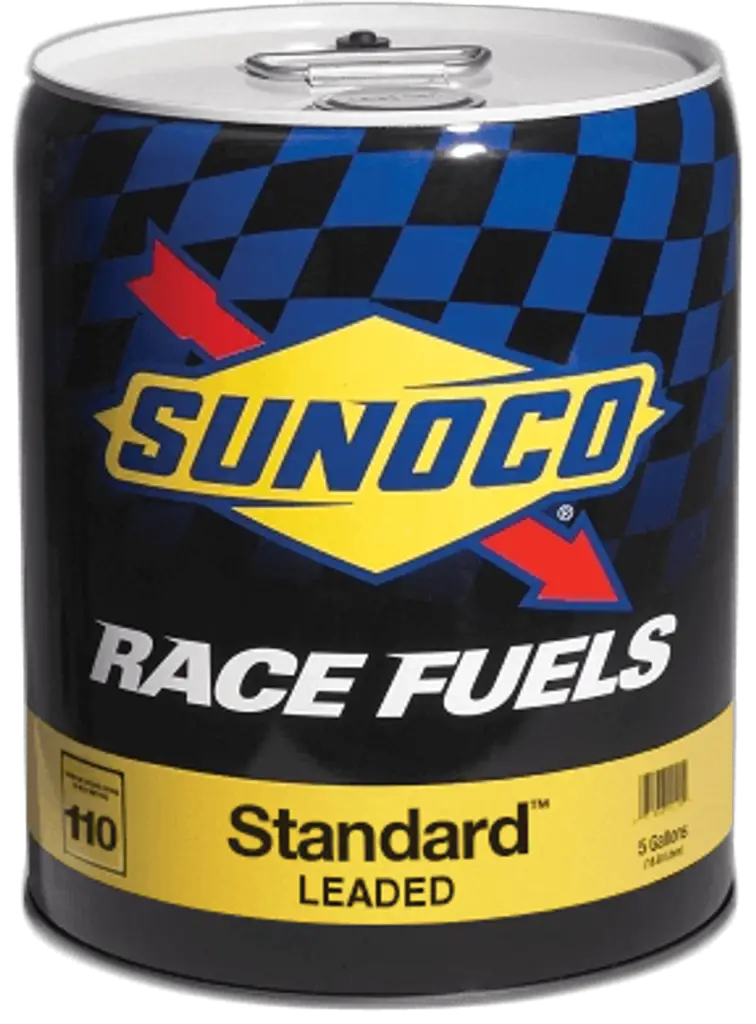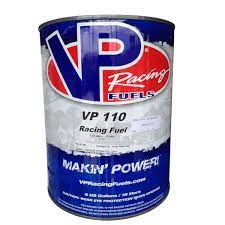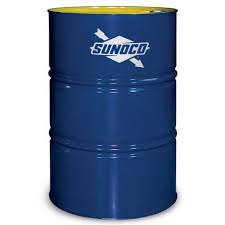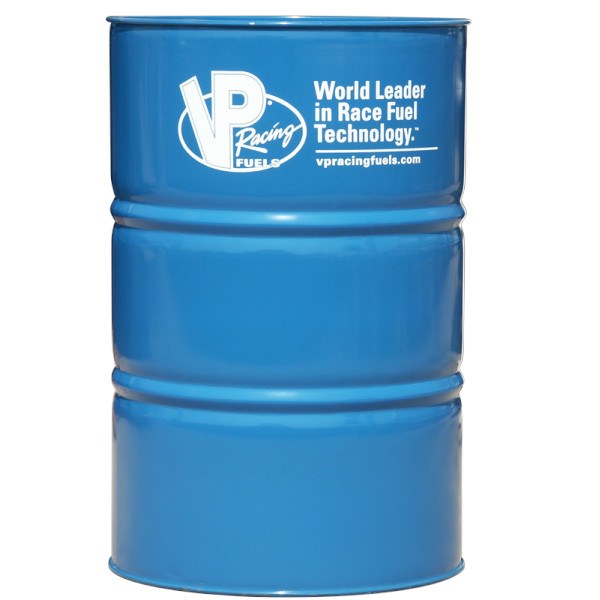With many branded racing fuels available in the market Sunoco and VP both have made their name for quality and performance.
But the question is Sunoco 110 vs VP 110, which is the best racing fuel?
Sunoco 110 comes out at the top with slight differences from VP 110. While both are leaded, no oxygenated racing fuels, Sunoco might be a more cost-friendly option. But VP 110 has a lower Reid Vapor Pressure than Sunoco 110, making it less prone to evaporation. It will also provide better engine performance and fuel economy, especially in cold weather.
Want to know more about these two racing oils? Then keep on reading-
Sunoco 110 vs VP 110: A Short Comparison!
These racing fuels may not differ as much from one another like 428 chain and 40 due to their nearly identical octane ratings. Nevertheless, here’s a table outlining the small differences between the two racing fuels:
| Comparison Factor | Sunoco 110 | VP 110 |
| Research Octane Number (RON) | 114 | 110 |
| Motor Octane Number (MON) | 106 | 109 |
| Octane (R+M)/2 | 110 | 109.5 |
| Reid Vapor Pressure(RVP) | 5.6 | 4.8 |
| Specific Gravity | 0.729 | 0.7050 |
| Distillation | 10% – 17450%-22090%-245 | 10% -183.7 50%- 225.890%-274.5 |
| Leaded/Unleaded | Leaded | Leaded |
| Detonation Resistance | High | High |
| Mixability(with other fuel) | Possible | Possible |
| Preferred By Racers | More preferred because of non-paraffin based | Less Preferred by Racers |
| Price | $81.74- $671.63 | $100-$897 |
Sunoco 110 vs VP 110: A Detailed Discussion
Now that you have a bit more idea about the differences from the table let’s move onto a more detailed discussion-
Octane Rating:
Sunoco 110 and VP 110 have almost similar Octane ratings. But these small differences can impact the performance.

Research Octane Number (RON):
In Sunoco 110, Research Octane is 114, while in VP 110, it is 110.
Research Octane Number (RON) is a measure of a fuel’s ability to resist knocking during the combustion process in an engine. RON is determined by running the fuel in a standardized laboratory engine under controlled conditions, usually at low to moderate engine speeds and loads.
A higher RON rating of 114 of Sunoco indicates that this fuel has a higher resistance to knocking. It will be able to withstand higher pressures and temperatures in the combustion chamber. This will be generally better for high-performance race engines with aggressive engine tuning.
But with a RON rating of 110 VP won’t be far behind in performance. Because the standard RON for racing fuels is 110 or higher.
Moreover, you need to make sure you are using racing fuel with the required RON rating for your vehicle. Because using fuel with a lower RON rating than recommended for a specific engine can cause knocking, which can lead to engine damage and reduced performance.
Motor Octane Number (MON):
VP 110 has a Motor Octane Number (MON) of 109, whereas MON for Sonoco 110 is 106.
The Motor Octane Number (MON) is another measure of a fuel’s ability to resist knocking during the combustion process in an engine. The MON rating is generally lower than the RON rating for a given fuel.
Because it measures the fuel’s resistance to knocking at higher engine speeds, loads, and temperatures than the RON test. For high-performance engines that require high-octane fuels to prevent knocking, a fuel with a higher MON rating is generally better.
So with a higher MON rating of 109 VP 110 is ahead in fuel resistance performance than Sunoco 110.
Octane (R+M)/2:
Sunoco 110 comes with an Octane (R+M)/2 of 110 and for VP 110 it is 109.5.
The octane rating (R+M)/2 indicates the average of the research octane number (RON) and motor octane number (MON) of a fuel. The (R+M)/2 rating is a more comprehensive measure of a fuel’s performance than either the RON or the MON alone.
It reflects the fuel’s ability to resist knocking across a range of engine speeds and loads. This is important for high-performance race engines.
With a slightly higher rating, Sunoco 110 racing fuel will have higher resistance to knocking. Knocking can cause engine damage and reduce performance during a race which is not desired.
Although this difference is very small, even such small numbers matter during a race. In any case, VP 110 fuel will also have a high resistance to knocking, and you can expect good performance as well.
Reid Vapor Pressure (RVP):
Sunoco 110 comes with 5.6 RVP and VP 110 comes with 4.8 RVP.
Reid Vapor Pressure (RVP) is a measure of a fuel’s volatility, or its tendency to evaporate at a certain temperature. It is defined as the pressure exerted by the fuel vapor in a closed container at a constant temperature of 100°F (37.8°C).
Higher RVP fuels tend to evaporate more easily and can lead to increased emissions of volatile organic compounds (VOCs). This can contribute to air pollution and smog formation. They may also cause vapor lock in the fuel system and starting problems in engines, especially in hot weather.

So the lower the value of RVP the better. In that regard, VP 110 is better than Sunoco 110 with a lower RVP of 4.8. It will be less prone to evaporation and can provide better engine performance and fuel economy.
Specific Gravity:
Specific Gravity for Sunoco is 0.729 whereas it is 0.7050 for VP.
Specific gravity is the ratio of the density of a substance to the density of a reference substance, typically water.
It can provide valuable information about the fuel’s density. It affects fuel combustion properties, energy content, and overall performance in the engine. A fuel with a higher specific gravity will be dense and contain more energy per unit volume.
This can provide higher power output and fuel efficiency. On the other hand, a fuel with a lower specific gravity may be less dense and contain less energy per unit volume. Such fuel will have lower power output and fuel efficiency.
That being said the difference between the two racing fuels in terms of specific gravity is really low. So the performance from both these racing fuels will be more or less similar. But Sunoco might have a smudge of advantage over the VP.
Distillation:
For Sunoco 110 the 10% evaporation is at 174 F, 50% evaporation is at 220 F and 90% evaporation is at 245 F. For VP 110 it is 183.7 F, 225.8 F, and 274.5 F accordingly.
In fuel distillation, the 10%, 50%, and 90% evaporative points are important parameters. These are used to characterize the boiling range of the fuel.
The 10% evaporative point (EP) is the temperature at which 10% of the fuel, by volume, has evaporated. This is also known as the initial boiling point (IBP). It indicates the fuel’s ability to vaporize and ignite quickly.
So with a 10 % evaporating point at 174 F Sunoco 110 will be better at cold starting and initial engine performance.

The 50% evaporative point, or the midpoint temperature (T50), is the temperature at which 50% of the fuel, by volume, has evaporated. This is an important measure of the volatility of the fuel. This point for Sunoco 110 is also low at only 220 F.
A lower T50 value is generally preferred because it indicates that the fuel has more low-boiling point components. This can improve throttle response and overall engine performance.
So Sunoco will be providing better engine performance than VP 110. But the 50 % evaporation point for VP is not far off as well.
The 90% evaporative point (EP) is the temperature at which 90% of the fuel, by volume, has evaporated. This is also known as the final boiling point (FBP).
With a 245 F as their 90% evaporating point, Sunoco will be able to evaporate more quickly and completely, leading to more efficient combustion.
But in cold weather or high altitude conditions, a higher 90% evaporation point may be desirable to ensure that the fuel does not evaporate too quickly and cause fuel system problems.
Leaded/Unleaded:
Both Sunoco 110 and VP 110 are leaded racing fuels.
Leaded racing fuel is a type of fuel that contains lead compounds as an additive. Lead is added to these racing fuels as an octane booster and to provide lubrication for the engine’s valve seats.
These fuels are normally used in racing engines, due to their ability to withstand high compression ratios and prevent detonation.
Detonation Resistance:
Sunoco 110 and VP 110 have very similar detonation resistance, as they both have an octane rating of 110.

Detonation is more likely to occur in high-performance race engines. These engines operate at high RPMs and generate a lot of heat and pressure. Fuels with a high octane rating, such as Sunoco 110 and VP 110, are able to resist detonation and pre-ignition under these conditions.
This is because higher-octane fuels have a slower burn rate, which allows them to resist premature ignition and burn more evenly in the engine.
Mixability (with other fuels):
Both of these fuels can be mixed with other fuels.
Racing fuels can easily be mixed with other fuels without any problem. But you need to make sure you are mixing leaded fuel with another leaded fuel, just like making sure to use the same brand while changing go-kart oil.
Otherwise, you might damage the oxygen sensors and the catalytic converters. If you are uncertain about the suitability of a particular fuel or fuel mixture, it’s best to consult with a qualified fuel expert or engine builder.
Final Verdict
Almost similar capabilities of these racing fuels make it a difficult decision to choose one. So it ultimately comes down to personal preference, availability, and any specific rules or regulations that may apply in a particular racing organization or event.
The budget is also a big consideration. For a 5 Gallon Pail, you will only need around $86 for Sunoco, whereas for VP it is $100. And for 54 Gallon drum VP will charge you around 900 $.
But you can get the same amount of Sunoco for under $700. It can be one of those dilemmas whether spending extra bucks is worth it or not just like is k1 speed worth it.
So, check in with your local store and compare the price before picking one for your vehicle.
Frequently Asked Questions (FAQs):
What Is The Probable Shelf Life Of Vp Engine Fuel?
The probable shelf life for VP engine Fuel is approximately two years when stored in a sealed container and under proper conditions. But if the container is re-sealed properly you can expect an already open container fuel to last 2 years as well. To ensure the longevity and quality of VP fuel, it should be stored in a cool and dry place.
Can You Expect An Increase In Horsepower From A Higher Octane Rating?
No, increasing octane fuel won’t improve fuel economy, boost engine power, or hasten engine startup. Higher octane fuel merely makes it more probable that the ignition will be under control. Moreover, it ensures that your engine will operate as it was intended to.
Which Of The Vp Racing Fuel Is Unleaded?
VP C10 is one of the unleaded racing fuels from VP. Moreover, it is non-oxygenated. The oxygen sensors and the Catalytic converters won’t be harmed by C10 because it doesn’t include any metal compounds.
End Words
That’s the end of our discussion on Sunoco 110 vs VP 110. Hopefully from the discussion, you are able to decide on a particular fuel that will suit your engine. Don’t hesitate to take professionals’ advice if any confusion arises.
Until Next Time!